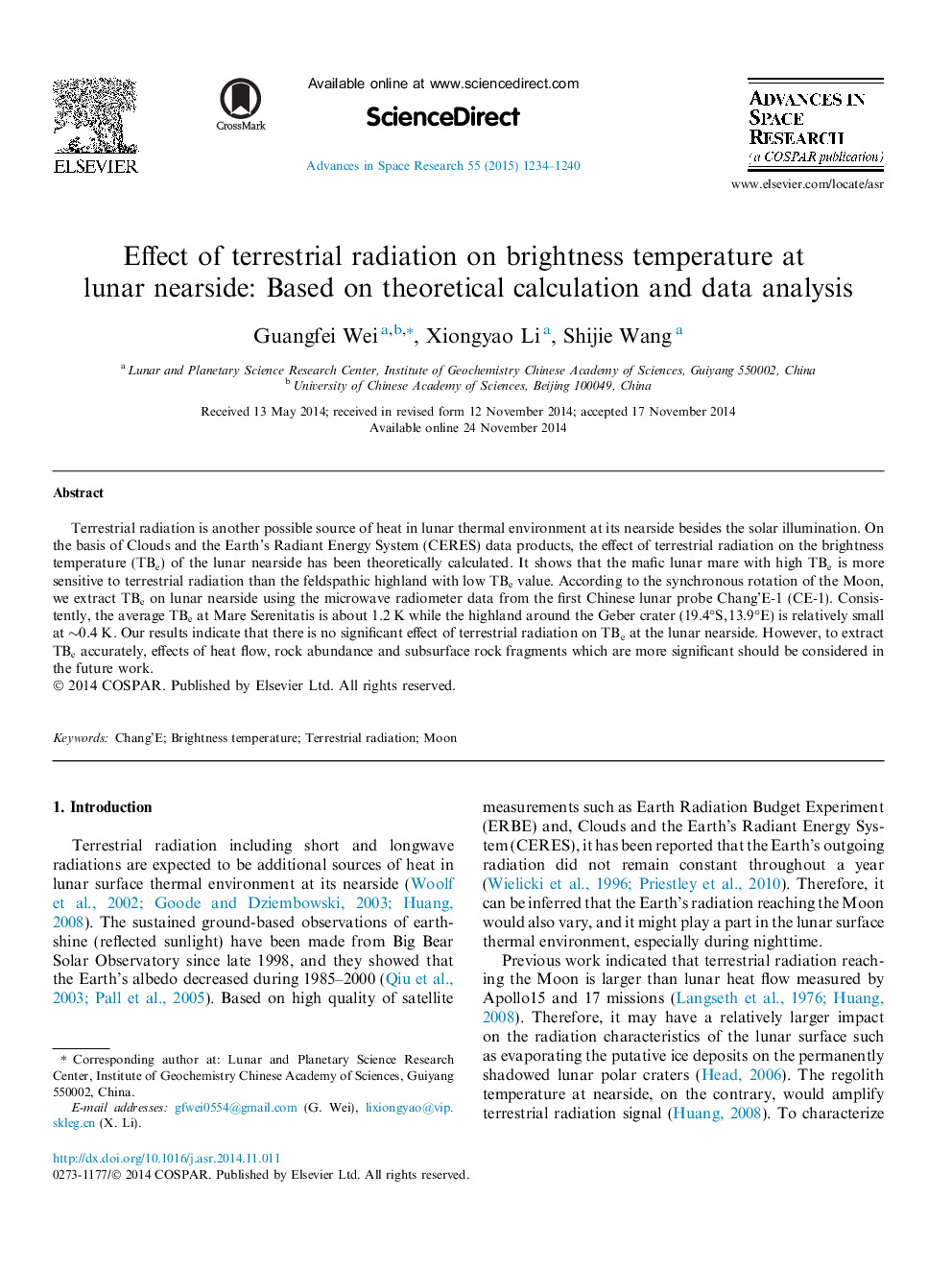| Article ID | Journal | Published Year | Pages | File Type |
|---|---|---|---|---|
| 10694247 | Advances in Space Research | 2015 | 7 Pages |
Abstract
Terrestrial radiation is another possible source of heat in lunar thermal environment at its nearside besides the solar illumination. On the basis of Clouds and the Earth's Radiant Energy System (CERES) data products, the effect of terrestrial radiation on the brightness temperature (TBe) of the lunar nearside has been theoretically calculated. It shows that the mafic lunar mare with high TBe is more sensitive to terrestrial radiation than the feldspathic highland with low TBe value. According to the synchronous rotation of the Moon, we extract TBe on lunar nearside using the microwave radiometer data from the first Chinese lunar probe Chang'E-1 (CE-1). Consistently, the average TBe at Mare Serenitatis is about 1.2 K while the highland around the Geber crater (19.4°S, 13.9°E) is relatively small at â¼0.4 K. Our results indicate that there is no significant effect of terrestrial radiation on TBe at the lunar nearside. However, to extract TBe accurately, effects of heat flow, rock abundance and subsurface rock fragments which are more significant should be considered in the future work.
Related Topics
Physical Sciences and Engineering
Earth and Planetary Sciences
Space and Planetary Science
Authors
Guangfei Wei, Xiongyao Li, Shijie Wang,
